Typically, the way for me to test if a laptop is actually usable, is to type a review on it. Every laptop that I've reviewed has taken this test, and the Spectre x360 will be no exception. I can tell you though that it will be fine, as I've been using this device as my daily driver for about a month and a half, as I've felt no need to use anything else for anything other than testing purposes.
Needless to say, this is going to be a glowing review of HP's new flagship laptop, because to be honest, it's just a fantastic, well-built laptop. It's not perfect, as no device is, but this is a PC that I think I can recommend to just about anyone.
The model that HP sent to me uses a dual-core Intel Core i7, 16GB RAM, and 512GB of storage, so this device is pretty decked out. You can grab it for $1299 from Best Buy or HP.com, although HP.com also offers a 1TB model for $1499, as well as cheaper variants with 8GB of RAM and 256GB of storage.
Specs
| Processor and graphics |
Intel® Core™ i5-7200U (2.5GHz, up to 3.1GHz, 3MB cache, 2 cores) + Intel® HD Graphics 620 |
|---|---|
| Display | 13.3" diagonal FHD UWVA BrightView WLED-backlit touch screen (1920 x 1080) |
| Memory | 8GB, 16GB |
| Storage |
256GB PCIe NVMe M.2 SSD |
| Battery | 3-cell, 57.8Wh Lithium-ion polymer battery |
| Audio | Bang & Olufsen; Quad speakers; HP Audio Boost |
| Networking | Intel® 802.11ac (2x2) Wi-Fi® and Bluetooth® 4.2 Combo |
| Ports | 2 x USB 3.1 Type-C™ Gen 2 (HP Sleep and Charge, Thunderbolt Gen 3); 1 x USB 3.1 Gen 1 (Type-A); 1 headphone/microphone combo |
| Body | 12.03 x 8.58 x 0.54-inches, 2.85-pounds |
Day one
Coming out of the box, it was clear that HP had built a premium laptop. It even comes with a sleeve to carry it in, which comes in handy, even if you're just going to throw it in a bag. Check out the unboxing and first impressions:
Design
The HP Spectre x360 is one beautiful PC. It features an all-metal design with a nearly edge-to-edge display. The bezels to the sides of the screen are just 5.45mm, compared to 15.12mm on last year's model.
There are a number of other improvements over the 2015 model as well. It's 2.1mm thinner, coming in at 13.8mm. The size of the body is smaller as well, with 9.67mm shaved off of each side. Of course, this is allowed by the smaller bezel. Finally, it's 0.35-pounds lighter.
The 2016 Spectre x360 has three USB ports, one of which is a standard USB Type-A, and the other two are Thunderbolt 3 capable, USB Type-C ports. Either of the Type-C ports can be used to charge the device and, since they also support Thunderbolt 3, they can be used to power up to two 4K monitors or one 5K monitor per-port. Of course, this laptop uses Intel HD Graphics, so I wouldn't exactly recommend a setup of four 4K or two 5K monitors.

But the combination of ports is a winning one, which should keep you away from a dongle-filled life, something that you would get with Apple's new MacBook Pro. The Type-A port is there for all of your legacy peripherals, but then you also get the power and fast data transfer speeds that come with Thunderbolt 3.
On the right side, you'll find a volume rocker and on the left, the power button. These are placed on the sides of the device to make it easier to use in tablet mode, which you'd get if you bend the screen all the way back (hence the x360 name).
The volume rocker feels well-placed, but the power button does not. It's completely flush with the rest of the body, so it's not easy to find by simply feeling it out. I tend to spend some extra time looking for it when booting up. To be fair, it's not really a big deal.
The webcam and Windows Hello camera are both placed above the screen, which I found to be good and bad at the same time. While the monitor is in an upright position, the webcam is in the perfect place; however, when it's in "tent mode", it's now on the bottom, making it hard to talk on video calls or even log in via Windows Hello.
x360
OK, so I've referred to tent and tablet modes by this point, so I should probably explain what that all means. HP has a number of products that include the term 'x360', and that means that the display can be folded at 360-degrees.
Because of this, you'll generally get four different ways to use the device. At a 90-ish-degree angle, that's your standard laptop mode, and it's probably how you're going to spend the majority of your time.

Next, at about 270-degrees, you can place the laptop with the keyboard facing down and the screen facing toward you. The use case of this is about the same as tent mode, which is anywhere between 270- and 360-degrees, where you would stand the PC upright in a 'tent' position.
These two modes are great for viewing something on the display. For example, it works well if you're watching a movie on Netflix or something along those lines.

Finally, at 360-degrees, you have tablet mode. Personally, I tried to use this for playing games such as Halo: Spartan Assault and Asphalt 8, and to be honest, it's not very comfortable for such uses. The device is a bit heavy and thick for that. If you want a tablet for playing games, get an iPad or a Huawei MateBook.

One of very few downsides to the Spectre x360 is that there is no pen support in this model. One of the major use cases for a tablet mode would typically be drawing, which you can still do, but you'd need to use a passive stylus.
Windows Hello
I have a confession to make; until HP sent me the Spectre x360, I'd never used a PC with facial recognition. I've used iris scanners on Windows phones, such as the Lumia 950 and 950 XL, fingerprint scanners on phones, such as the Alcatel IDOL 4S, and even a phone with an iris scanner and a fingerprint reader, the HP Elite x3. I've even used a fingerprint reader on a Windows PC, the Huawei MateBook.
But between all of those devices, I had never used the third form of Windows Hello, which is facial recognition, and it's amazing. All you have to do is be in front of your PC when you're booting it up.
I've always felt that a fingerprint reader makes more sense on a phone and facial recognition works better on a PC. After all, your face is in front of the PC when it starts up, and you use a finger to wake your phone.
It's fast and it feels natural to log into the Spectre x360 with my face. There was never a single time that it didn't recognize me. In fact, when there were times that I'd be using another PC and I'd boot up the Spectre, I'd just turn around and stick my head in front of it when the lock screen came up, because it was that easy.
Windows Hello was easily one of my favorite features of this laptop, and I don't know if I'll ever buy a PC without it ever again.
The display
As I mentioned earlier, the bezels on this device are incredibly thin, which gives the display a beautiful look. As you've undoubtedly seen from the pictures though, the top and bottom bezels are much larger, which is to make room for the webcam and Windows Hello camera on top. On the bottom, that seems to only make room for the HP logo.
The display itself is stunning, and it's about as good as it can be for what it is. OK, let me explain that.
The Spectre x360 uses a 13.3-inch 1920 x 1080 IPS LCD. The colors are vibrant; in fact, HP says it has a 72% color gamut. It's a beautiful display, but it's still 1080p, and you will be able to see pixels. It looks far better than other displays of similar sizes and resolution that I've used, but it's not what Apple would call Retina.
To compare, the pixel density on the device is 166ppi, but on Microsoft's Surface Book - which uses a 13.5-inch display with a 3000 x 2000 resolution - the pixel density is 267ppi. Personally, I just wish that HP offered an option with a higher resolution because the Spectre x360 is just so close to being the perfect hybrid device.
One other thing that I'd prefer on the display - and this is completely a personal preference - is a different aspect ratio. Surface uses 3:2, and even MacBooks use 8:5; 16:9 feels too widescreen on a laptop these days.
The keyboard and trackpad
I type for a living, so needless to say, I'm picky about the keyboards that I use. This one, however, grew on me quickly. I had no problem at all adopting the Spectre x360 as my daily driver, and I wouldn't mind continuing to use it.

HP calls it an edge-to-edge keyboard, and it's about as wide as the display. The keys travel 1.3mm, which is just a bit more shallow than a standard 1.5mm, but you won't notice the difference. This keyboard is super comfortable to type on, and as I noted earlier, I'm using it to type this review.
The glass trackpad is also awesome. I'm more of a mouse guy, but when I began using the Spectre x360, I immediately found it to be smooth and comfortable to use.

Audio
The Spectre x360 uses Bang & Olufsen speakers, which you'll find in a lot of HP's products these days. Naturally, they sound great. They're no substitute for standalone speakers, but you'll certainly find that they're much louder and the sound quality is much better than your average laptop.

This device has four speakers, two above the keyboard and two on the bottom of the PC. This was a bit of an ingenious design on HP's part, as it allows for great audio quality no matter how you're using the device. For example, if you have it in tent mode, the speakers on the keyboard are now facing away from you, while the one underneath is now facing toward you.
If you're really an audiophile, you're still going to want to use your favorite speakers, but for most people, you'll probably be happy with the B&O ones that ship with the Spectre x360.
Some notes about software
One thing that really bothers me about this laptop is that the Windows 10 Anniversary Update (AU) isn't yet available for it. It shouldn't bother me, since there are any number of ways to get it, such as force-upgrading it, enrolling in the Release Preview ring of the Insider Program, or doing a clean install with the Media Creation Tool, but it just feels weird that it's been almost five months since the AU shipped and HP still hasn't rolled it out for its new flagship laptop.
Indeed, this Spectre x360 is still running Windows 10 version 1511. For the purposes of reviewing the laptop, I chose to stick with the out of box experience. And by the way, that should say something about the software experience on this device, because on most laptops, I would do a clean install after getting a feel for the stock experience.

As far as pre-installed software goes, it's very minimal on the Spectre x360. The only third-party app that comes with it is McAfee LiveSafe, which I found easy to uninstall. And to be clear, I do recommend uninstalling it, as it's an annoying app and there are better ways to protect your PC.
Then there are the standard HP apps, such as HP Support Assistant, which is where you'll be able to update the drivers on the device. HP Recovery Manager and HP Recovery Media Creation are pretty self-explanatory.
Performance and battery life
I've been very pleased with the performance of the Spectre x360. As I've stated a few times, I've used it as my daily driver, meaning that I've written many articles on it, done my normal light Photoshop work, and compiled apps for the Windows Store. I find that in day-to-day use, the performance far exceeds my Surface Pro 3 (Core i7, 8GB RAM), which is my regular laptop daily driver.
But battery life really blew me away. First of all, HP promises 15 hours, which I didn't expect to get, and neither should you. The battery life estimates that most OEMs report are measured under optimal conditions.
However, I had no trouble getting a full day's work out of it, which is to say between 8-10 hours. This exceeds any machine that I've used that uses Intel's sixth-generation Skylake processors. If you ask me, it really speaks to the quality of the seventh-generation Kaby Lake chips that are going out now, and powers this machine.
I used PCMark to benchmark the device. I performed three tests: baseline, creative, and work. Naturally, the baseline test is a sort of overall test, while creative checks things like video editing and such, and work is for productivity, such as documents and spreadsheets.
| Baseline |
| Creative |
| Work |
Conclusion
If you've been following along, then you probably know how this conclusion is going to go. The HP Spectre x360 is definitely among the best laptops on the market right now. It's pretty inexpensive as well, starting at $1,149 but offering 16GB RAM, 512GB storage, and a Core i7 for just $1,299.

Of course, there are more powerful alternatives, such as larger quad-core machines or laptops with a dedicated GPU. There are also PCs with pen support and displays with higher resolution.
But this device is simply a great all-around PC. I'd love it if HP decided to introduce new models that offered the things I just mentioned, but unless you need them specifically, you're good to go with the Spectre x360. This is a device that I can recommend to almost anyone.






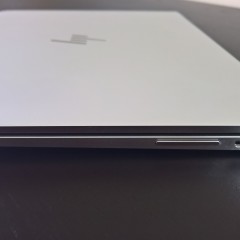
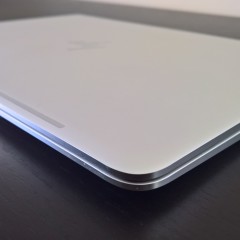
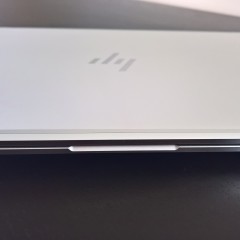
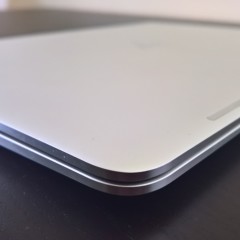
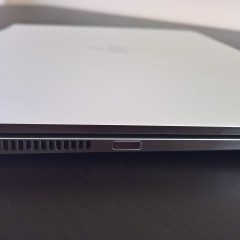
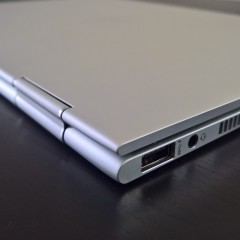

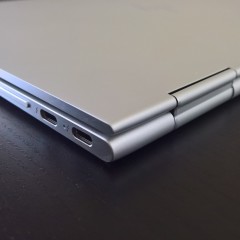




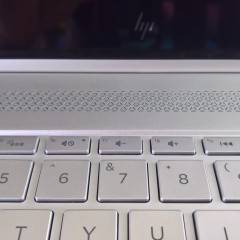
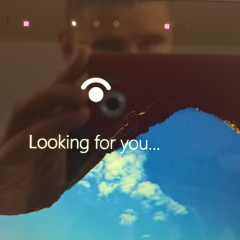
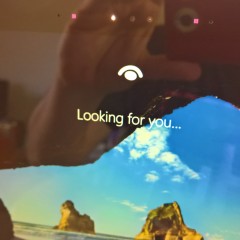

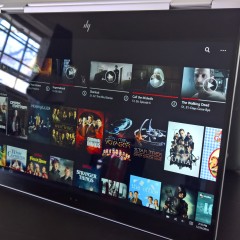
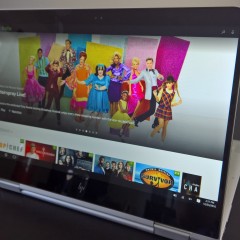
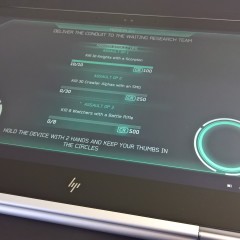










10 Comments - Add comment